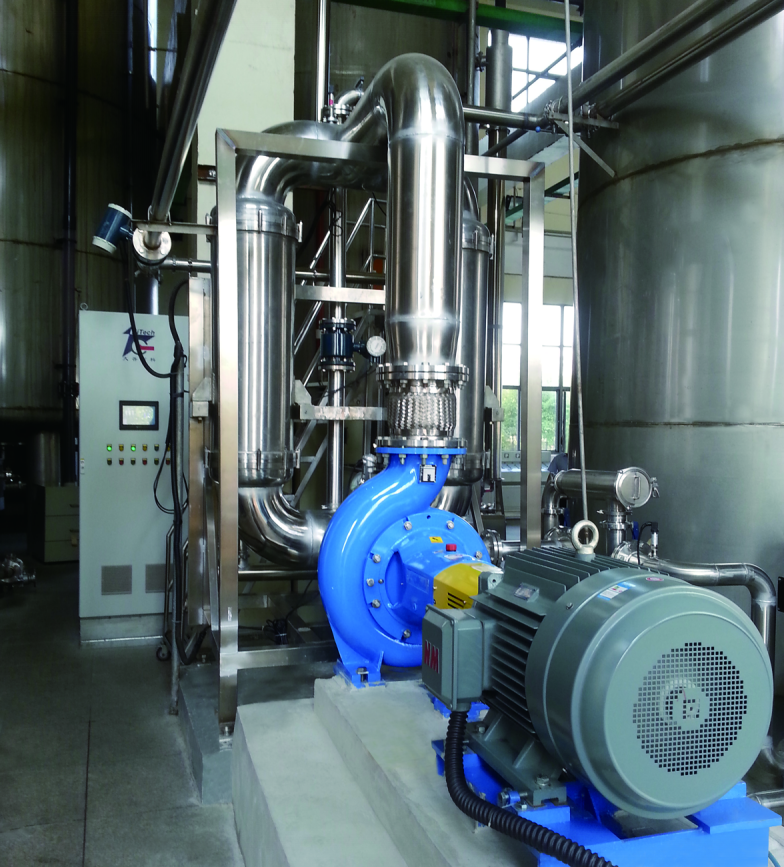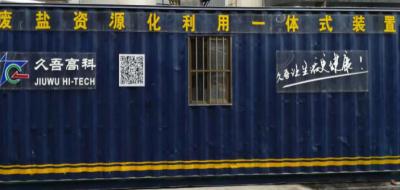How Membrane Separation Technology Treats the Difficulty during the Clarification of Vinegar
Vinegar is a nutritious sour condiment, not only has a sour taste, but also has a certain umami, sweetness and aroma. The source of this color, fragrance, and taste is mainly produced by the biochemical effects of starch in the raw materials through enzymes secreted by microorganisms, such as the hydrolysis of starch into sugar, the fermentation of sugar into alcohol, and the oxidation of alcohol into acetic acid. However, during the entire brewing process, the starch, cellulose, protein, fat and other macromolecular substances in the raw materials were not completely decomposed, which caused the vinegar to become cloudy and precipitated, which seriously affected the quality of the product and the improvement of commodity grades.
Therefore, vinegar must be clarified before leaving the factory. At present, many vinegar brewing companies also use the traditional natural sedimentation method to clarify vinegar. This method mainly relies on mutual polymerization and precipitation of colloidal substances in vinegar to achieve clarification. However, the processing time of this method is generally longer, and its effect is not satisfactory, and it is often easy to cause the inner wall of the vinegar bottle during the shelf life. At the liquid level and at the bottom of the bottle, dark brown circles and sediments appeared; some loose flocs gathered at the bottom of the bottle, and the flocs disappeared after a little shaking. This phenomenon indicates that the vinegar has precipitated during the storage period. It has affected the organoleptic indicators of the product, and seriously affected the quality of the product and the consumer psychology of the public, and it has not adapted to the needs of the rapid expansion of the vinegar market.
Selection of Membrane Separation Technology in Clarification of Vinegar
Using
ceramic membrane filtration system as a clarification process for vinegar can solve the existing dilemma. The principle of
ceramic membrane filtration is to drive vinegar through the surface of the membrane under pressure. The organic acid and the substances that make up the vinegar aroma and ester aroma pass through the filtration membrane to become permeate and flow out, while the vinegar has micron and sub-micron suspended particles and other macromolecular proteins and bacterial substances are blocked by the filter membrane. The inorganic ceramic membrane uses micropores with appropriate pore sizes to filter out these impurities without affecting the flavor of vinegar. At the same time, the ceramic membrane itself has the characteristics of acid and alkali resistance, easy to clean and regenerate. It is used in the filtration and separation of vinegar, showing more obvious advantages than organic membranes and other traditional filters.
Because vinegar contains protein, tanning and colloidal substances, the membrane is easily contaminated and blocked after a period of filtration, resulting in a decrease in membrane flux. When the membrane is seriously polluted, chemical cleaning can be used to remove the pollutants, so that the membrane can restore the membrane flux for repeated use, and reduce the cost of membrane materials. Generally, alkaline chemical reagents are used as cleaning agents to remove organic matter such as protein and grease. Jiuwu Hi-Tech has used ceramic membranes to clarify vinegar in continuous operation for many years, and 0.1% sodium hydroxide solution is used to clean contaminated membranes. The cleaning effect is good and the membrane regeneration effect is stable.
Technical Advantages of Vinegar Membrane Filtration
1. Impurity separation, high light transmittance, no muddy or precipitation after long-term storage.
2. It saves traditional filtration links such as diatomite, simplifies the process and reduces production costs.
3. Normal temperature filtration replaces heat sterilization to ensure product quality.
4. It adopts cross-flow filtration process design, which is not easy to be blocked, and can realize automatic control, which is beneficial to management and maintenance.
5. Membrane elements have long service life, low regeneration cost, stable process and simple operation.
The ceramic membrane separation system can directly process the raw liquid of vinegar production, replacing the traditional multi-step filtration process. It has high filtration accuracy, high filtrate quality and no back mixing. After filtration, it does not need high temperature sterilization, retains the natural flavor of the product, and the equipment can be closed for operation. Membrane components and pipe valves use sanitary stainless steel to meet the requirements of clean production. The equipment is resistant to high temperatures and has a long service life. The equipment has strong chemical stability, acid and alkali resistance, no leaching, and meets food safety requirements.






 +86-25-58849045
+86-25-58849045
 +86-25-58749295
+86-25-58749295
 jiuwu@jiuwu.com
jiuwu@jiuwu.com
 No. 9 Park Road, Pukou District, Nanjing City (Sanqiao Factory)
No. 9 Park Road, Pukou District, Nanjing City (Sanqiao Factory) Call us on:
Call us on:  Email Us:
Email Us:  No. 9 Park Road, Pukou District, Nanjing City (Sanqiao Factory)
No. 9 Park Road, Pukou District, Nanjing City (Sanqiao Factory)

 English
English 한국어
한국어 français
français русский
русский Español
Español
